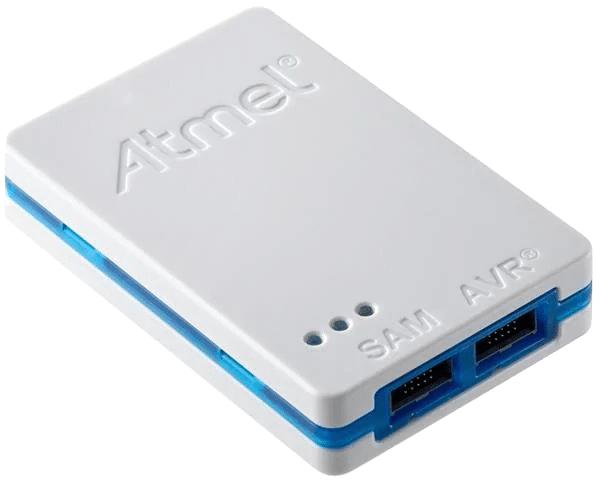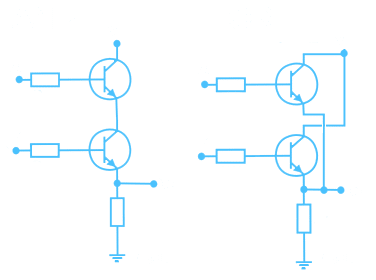
Atmel ICE not recognized
20 November 2020





Le porte logiche sono la base dei circuiti elettronici e le possiamo trovare un po’ ovunque e anche nella programmazione si utilizzano queste funzioni, quindi diamo uno sguardo a cosa fanno.
Le più semplici sono AND e OR che possono avere 2 o più porte in ingresso e la loro l’uscita verrà impostata in base ai segnali ricevuti in ingresso.
Le porte vengono raffigurate con un simbolo che ne descrive il funzionamento e qui potete vedere come vengono disegnate e le loro funzioni:

La simbologia più utilizzata è quella US, ma ve le elenco anche in altri formati visto che su gli schemi si possono trovare rappresentate in altre forme.
Il cerchio o pallino sul pin della porta indica che questa è negata e quindi si avrà uno stato logico invertito rispetto al suo normale funzionamento.
ES: una porta AND avrà l’uscita alta solo se entrambi gli ingressi sono alti, mentre la NAND ha sempre l’uscita alta tranne se tutti gli ingressi sono alti.
Ora vediamo effettivamente come funzionano con la relativa tavola della verità:
Supponiamo di avere 2 ingressi chiamati A e B ed un’uscita Q, vediamo di seguito come si comportano queste porte logiche
| BUFFER | INVERT (NOT) | AND | NAND | ||||||||
|---|---|---|---|---|---|---|---|---|---|---|---|
| TO | b | Q | TO | b | Q | TO | b | Q | TO | b | Q |
| 0 | x | 0 | 0 | x | 1 | 0 | 0 | 0 | 0 | 0 | 1 |
| 1 | x | 1 | 1 | x | 0 | 0 | 1 | 0 | 0 | 1 | 1 |
| 1 | 0 | 0 | 1 | 0 | 1 | ||||||
| 1 | 1 | 1 | 1 | 1 | 0 | ||||||
| OR | NOR | XOR (EXOR) | XNOR (EXNOR) | ||||||||
|---|---|---|---|---|---|---|---|---|---|---|---|
| TO | b | Q | TO | b | Q | TO | b | Q | TO | b | Q |
| 0 | 0 | 0 | 0 | 0 | 1 | 0 | 0 | 0 | 0 | 0 | 1 |
| 0 | 1 | 1 | 0 | 1 | 0 | 0 | 1 | 1 | 0 | 1 | 0 |
| 1 | 0 | 1 | 1 | 0 | 0 | 1 | 0 | 1 | 1 | 0 | 0 |
| 1 | 1 | 1 | 1 | 1 | 0 | 1 | 1 | 0 | 1 | 1 | 1 |
Le porte logiche si trovano su circuiti integrati e solitamente ce ne sono più di una al suo interno, ma se ci serve solo una porta, potrebbe essere uno spreco di spazio e denaro se utilizzassimo un package intero per collegare solo una porta. Con uno o più transistor possiamo ottenere lo stesso risultato, qui a fianco possiamo vedere la stessa funzione utilizzando dei transistor NPN.


| Cookie | Durata | Descrizione |
|---|---|---|
| cookielawinfo-checkbox-analytics | 11 months | This cookie is set by GDPR Cookie Consent plugin. The cookie is used to store the user consent for the cookies in the category "Analytics". |
| cookielawinfo-checkbox-functional | 11 months | The cookie is set by GDPR cookie consent to record the user consent for the cookies in the category "Functional". |
| cookielawinfo-checkbox-necessary | 11 months | This cookie is set by GDPR Cookie Consent plugin. The cookies is used to store the user consent for the cookies in the category "Necessary". |
| cookielawinfo-checkbox-others | 11 months | This cookie is set by GDPR Cookie Consent plugin. The cookie is used to store the user consent for the cookies in the category "Other. |
| cookielawinfo-checkbox-performance | 11 months | This cookie is set by GDPR Cookie Consent plugin. The cookie is used to store the user consent for the cookies in the category "Performance". |
| viewed_cookie_policy | 11 months | The cookie is set by the GDPR Cookie Consent plugin and is used to store whether or not user has consented to the use of cookies. It does not store any personal data. |